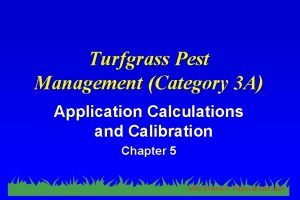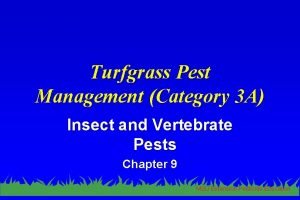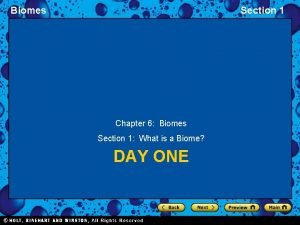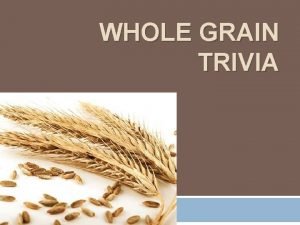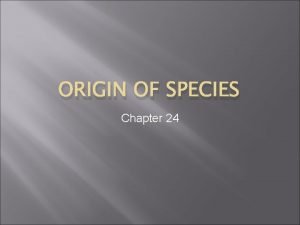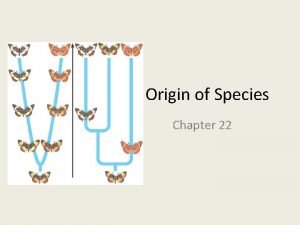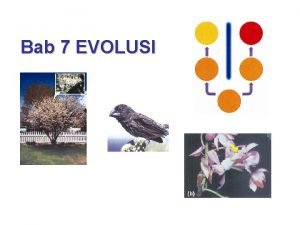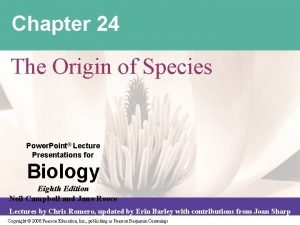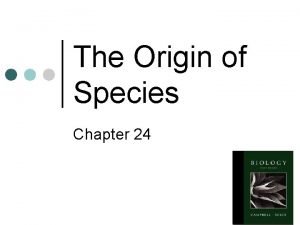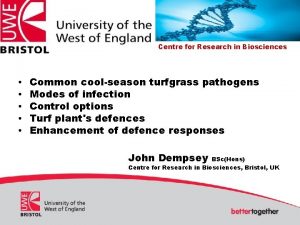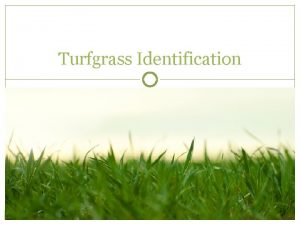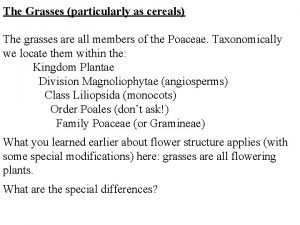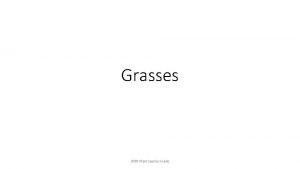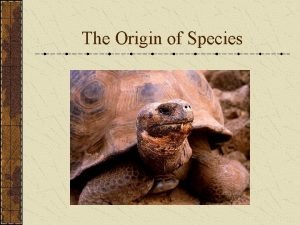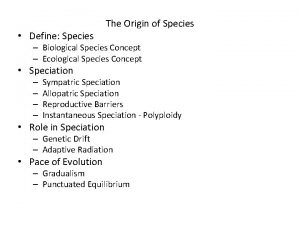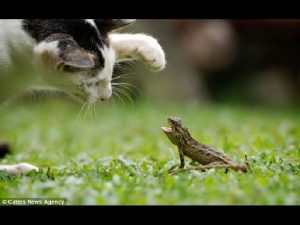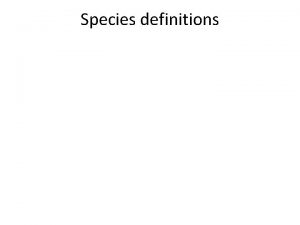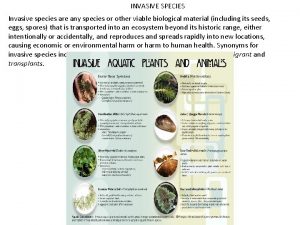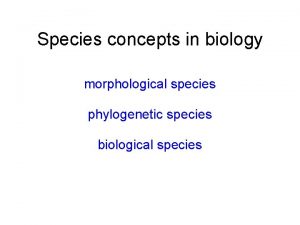Chapter 2 Turfgrass species 1 Coolseason grasses general

















- Slides: 17

Chapter 2. Turfgrass species


1. Cool-season grasses ★ general Characteristics : - Usually long-day plants requiring cool nights and vernalization - mostly adapted to temperate and subarctic but sometimes in subtropical - C 3 plants - Festucoideae subfamily - 3 tribes ; Festuceae, Aveneae and Triticeae

A. Fescues - 6 species out of approximately 100 species -Coarse fescues : Tall fescue, Medow fescue - Fine fescues : Creeping red fescue, Chewings fescue, Sheep fescue, Hard fescue

A-1. Tall fescue (Festuca arundinaceae Schreb) a. general characteristics : coarse-textured, bunch-type grass, seeded type b. description : rolled vernation, membranous ligule(0. 4 -1. 2 mm long), short blunt auricle, broad divided collar blade(5 -10 mm wide), contracted panicle c. adaptation and use : utility turf with heat and drouth stress tolerance New cultivars with finer texture are developed d. cultivars : Kentucky-31, Rebel, Olympic, Mustang Falcon, Arid www. ntep. org : National turfgrass evaluation program e. cultural intensity : Low to medium Mowing range ; above 35 mm (60 - 90 mm optimum) Fertilization : 5 - 15 g. N/m 2/year Seeding rate : 20 - 30 g/m 2

A-2. Medow fescue (Festuca elatior L. or F. pratensis Huds) a. general characteristics : similar to tall fescue b. description : rolled vernation, membranous truncate ligule(0. 2 -0. 5 mm long) short blunt auricle, broad continuous collar blade(3 -8 mm wide), contracted panicle c. adaptation and use : similar to tall fescue, less persistent under drouth and heat more widely used in Europe d. cultivars : Beaumont e. cultural intensity : similar to tall fescue

A-3. Fine fescues (Festuca spp) a. general characteristics : High shade tolerance, fine texture, b. general use : shade condition as mixture, utility turf c. species and descriptions - Creeping red fescure (Festuca rubra) : folded, truncate (0. 5 mm), no auricle, narrow collar, panicle - Cewings fescue (Festuca rubra commutata) : same as CRF - Sheep fescue (Festuca ovina) : folded, truncate (0. 3 mm), no auricle, divided broad collar, panicle - Hard fescue (Festuca longifolia) : similar to Sheep fescue

d. adaptation and use : - utility turf with less intensive care : Sheep and Hard fescue - Sheep fescue is most drouth hardy, acid soil tolerant and low fertility adapted - Creeping red fescue and chewings fescue : higher quality with density, less stress and disease hardiness - NTEP fine fescues e. cultural intensity : medium to low mowing range : 40 - 50 mm Fertilization : 5 - 10 g. N/m 2/year Seeding rate : 20 - 30 g/m 2

B. Bluegrasses - 4 species out of over 200 species - most widely used cool-season grass -boat-shaped leaf tip - Kentucky bluegrass, Rough bluegrass, Canada bluegrass, Annual bluegrass

B-1. Kentucky bluegrass (Poa prantensis L) a. general characteristics : rhizomatous species, Queen of the grass, high quality with low heat and drouth tolerance apomictic species - minimum variation through generations b. description : folded vernation, truncate ligule(0. 2 -0. 6 mm long), no auricle, broad divided collar, blade(2 -4 mm wide), panicle c. adaptation and use : Most widely used throughout subarctic and temperate, well-drained, moist, and fertile soil lawns, golf, athletic fields and other gerneral purpose d. cultivars : Adelphi, Baron, Midnight etc (NTEP) e. cultural intensity : medium to high Mowing range ; 20 - 60 mm (30 - 40 mm optimum) Fertilization : 10 - 25 g. N/m 2/year Seeding rate : 5 - 10 g/m 2

B-2. Rough bluegrass (Poa trivialis L) a. general characteristics : stoloniferous species, yellow-green, alternative species for damp or moist condition, low quality with poor heat and drouth tolerance overseeding species to warmseason grass b. description : folded vernation, acute or pointed ligule(2 -6 mm long), no auricle, broad divided collar, blade(1 -4 mm wide), panicle c. adaptation and use : utility turf for wet area d. cultivars : Sabre etc (NTEP) e. cultural intensity : low to medium Mowing range ; 12 - 25 mm Fertilization : 10 - 15 g. N/m 2/year Seeding rate : 5 - 10 g/m 2 Irrigation necessary

B-3. Canada bluegrass (Poa compressa L) a. general characteristics : weekly rhizomatous species, bluish-green, very low quality, soil stabilizing utility turf b. description : folded vernation, truncate ligule(0. 2 -1. 2 mm long), no auricle, narrow divided collar, blade(1 -3 mm wide), panicle c. adaptation and use : utility turf d. cultivars : Canon etc e. cultural intensity : very low

B-4. Annual bluegrass (Poa annua L) a. general characteristics : bunch-type or weekly rhizomatous species, high quality green in subarctic climate, otherwise winter weed b. description : folded vernation, pointed or acute(0. 8 -3 mm long), no auricle, broad divided collar, blade(1 -3 mm wide), panicle c. adaptation and use : greens in northern countries, moist well-drained cool conditions d. cultivars : common e. cultural intensity : medium to high in green condition

C. Ryegrasses - 2 species out of 10 species - Perennial ryegrass and Italian(Annual) ryegrass - Fast growing species

C-1. Perennial ryegrass (Lolium perenne L) a. general characteristics : bunch-type species, may behave as annual, high quality with high wear tolerance, fast establishment from seed, high disease activities during wet and hot periods b. description : folded vernation, truncate to round ligule(0. 5 -2 mm long), claw-like auricle, broad divided collar, blade(2 -5 mm wide) with noticeable veins and glossy abaxial(back side), spike c. adaptation and use : Most widely used in moist cool environments(Europe) well-drained, moist, and fertile soil, mixtures with Kentucky bluegrass lawns, golf, athletic fields and other general purpose overseeding species on warmseason grasses d. cultivars : Manhattan, Derby etc (NTEP) e. cultural intensity : medium to high Mowing range ; 10 - 50 mm (30 - 40 mm optimum) Fertilization : 10 - 25 g. N/m 2/year Seeding rate : 20 - 30 g/m 2

C-2. Annual ryegrass (Lolium multiflorum Lam) a. general characteristics : bunch-type species, mostly as annual low quality with coarse texture, very fast establishment from seed b. description : rolled vernation, rounded ligule(0. 5 -2 mm long), clawlike auricle, broad continuous collar blade(3 -7 mm wide) with noticeable veins and glossy abaxial(back side), spike with awned spikelets c. adaptation and use : similar to Perennial ryegrass but low quality and temporary purpose overseeding species on warmseason grasses d. cultivars : common e. cultural intensity : low to medium, similar to Perennial ryegrass

D. Others - Smooth bromegrass : low quality at extreme conditions such as semiarid in temperate - Alkaligrass : low quality at saline or alkaline soils in temperate
 Turfgrass pest management (category 3a practice test)
Turfgrass pest management (category 3a practice test) Black turfgrass ataenius
Black turfgrass ataenius Bluegrass billbugs overwinter as adults
Bluegrass billbugs overwinter as adults Mountain lion keystone species
Mountain lion keystone species Panicoid grasses
Panicoid grasses A plain full of grasses and scattered trees and shrubs
A plain full of grasses and scattered trees and shrubs Marine ecosystem dominated by marsh grasses
Marine ecosystem dominated by marsh grasses Rice is a grain true or false
Rice is a grain true or false Wheat flower diagram
Wheat flower diagram Grasses for flower arranging
Grasses for flower arranging Planos en cinematografia
Planos en cinematografia Where did general lee surrender to general grant?
Where did general lee surrender to general grant? Origin of species chapter 24 manhwa
Origin of species chapter 24 manhwa Example of biological species
Example of biological species The origin of species chapter 22
The origin of species chapter 22 Origin of species chapter 7
Origin of species chapter 7 The origin of species chapter 24
The origin of species chapter 24 The origin of species chapter 24
The origin of species chapter 24
